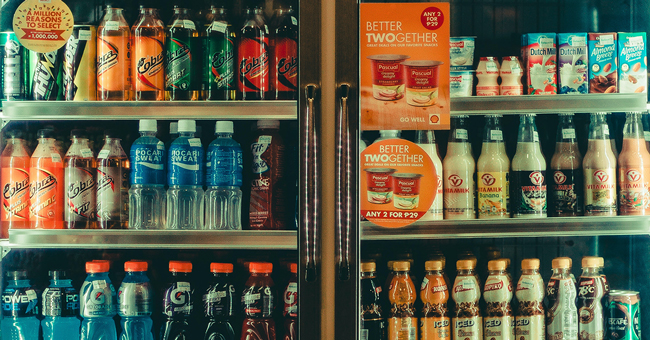Convenience store retailers remain optimistic about the beverage category’s rebound as pandemic restrictions lift and consumer behaviors begin to normalize, according to the latest “Beverage Bytes” survey by Goldman Sachs Equity Research.
In the survey, which represents 36,000 retail locations or about 25% of the C-store channel, respondents voiced concerns over persistent out-of-stock pressures and increases in traffic, while also sharing optimism around the energy drinks and new category innovations from Monster.
Overall, c-store beverage sales were up 12% year-over-year in Q2 2021. According to the survey, growth during this quarter was largely driven by an increase in traffic which in turn compensated for a decrease in basket sizes as consumers began to shift from shopping for future consumption back to immediate use.
Although growth is trending positively at the moment, retailers expect sales to slow down during the second half of the year, specifically across alcoholic beverage categories, as more on-premise locations reopen. Although many restaurants and bars have begun to return to semi-normal operations, the majority of c-store retailers that responded to the survey reported continued strong demand and volume increases in the non-alcoholic beverage categories.
Respondents anticipate Monster will lead the category’s growth with the launch of better-for-you energy drink True North in six SKUs across select markets. The report suggests better-for-you energy drink varieties will likely have a significant impact on the category over the next five years.
According to the survey, the energy drink category overall experienced “robust growth,” increasing 23% in Q2 compared to 15% in Q1 and 10% in Q4. The category is predicted to grow 13% in 2021. Red Bull’s 19% jump in sales during Q2 contributed to this growth, supported by Monster’s 11% increase. Retailers are also optimistic about C4 and Celsius after strong double digit sales in Q2, but are not holding out much hope for Rockstar.
With products like the recently announced True North – an organic plant-based sparkling energy water packaged in 12 oz slim-line cans – Monster is expected to lead the category’s growth, according to respondents. The report suggests better-for-you energy drink varieties will likely have a significant impact on the category over the next five years.
Amid that optimism, however, the survey revealed that maintaining inventory remains the biggest challenge for retailers across non-alcoholic beverages. Despite the rebound of consumer mobility and recent increases in volume sales, there is little hope that the supply chain disruptions will be resolved anytime soon. The aluminum can shortage has played a major role in out-of-stock pressures; however, the report notes that no single category has been impacted more than any other. Respondents cited Gatorade as one of the hardest brands to stock right now, in addition to Arizona Teas and Tropicana products. Some suppliers have loosely suggested the inventory issue will be resolved by early fall; however, many others believe a recovery won’t come before the end of the year.
The vast majority of retailers (90%) also anticipate significant pricing increases over the next two quarters, a large jump from expectations in Q1 when only 50% of respondents believed prices would go up. Out-of-stock issues and the impact of inflation on labor and transportation costs have largely driven these changes in the industry. Goldman Sachs analysts expect Red Bull will raise prices anywhere between a 3-5% increase, or possibly more. Coke and Pepsi are anticipated to significantly raise their prices, while Red Bull and Monster products are only expected to sustain “moderate increases.”
Lastly, retailers noted that promotions are even becoming less effective since the majority of products in specific categories tend to be priced similarly. Over the “all-important July 4th holiday” price promotions were virtually non-existent, further signaling the negative impact supply chain constraints and demand has had on the industry.

